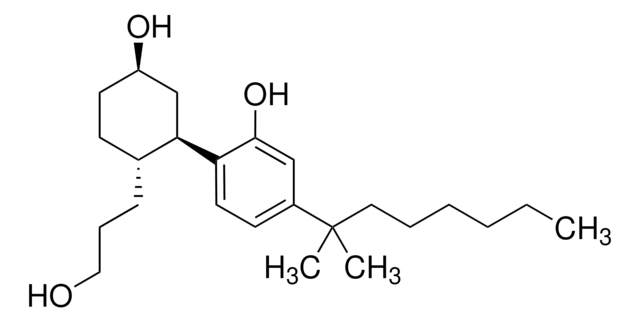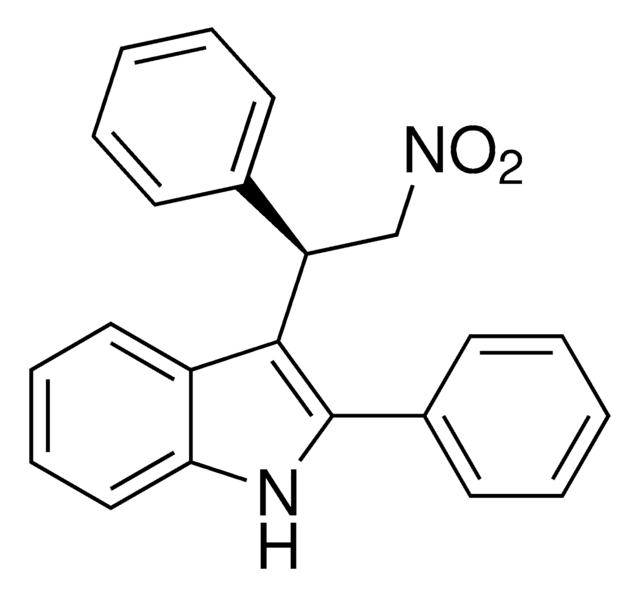A0980
AM281
≥98% (HPLC)
Sinonimo/i:
1-(2,4-Dichlorophenyl)-5-(4-iodophenyl)-4-methyl-N-4-morpholinyl-1H-pyrazole-3-carboxamide, AM 281
About This Item
Prodotti consigliati
Livello qualitativo
Saggio
≥98% (HPLC)
Forma fisica
powder
Condizioni di stoccaggio
desiccated
Colore
white
Solubilità
DMSO: >6 mg/mL
H2O: insoluble
Temperatura di conservazione
2-8°C
Stringa SMILE
Cc1c(nn(-c2ccc(Cl)cc2Cl)c1-c3ccc(I)cc3)C(=O)NN4CCOCC4
InChI
1S/C21H19Cl2IN4O2/c1-13-19(21(29)26-27-8-10-30-11-9-27)25-28(18-7-4-15(22)12-17(18)23)20(13)14-2-5-16(24)6-3-14/h2-7,12H,8-11H2,1H3,(H,26,29)
AJFFBPZYXRNAIC-UHFFFAOYSA-N
Informazioni sul gene
rat ... Cnr1(25248)
Applicazioni
- to study its effects on memory deficit following naloxone-precipitated morphine withdrawal in mice
- to study the role of CB1 receptor system in modulating acetaldehyde-induced effects in rats during the extinction-, relapse-, and conflict-experiments
- to study its effect on scopolamine-induced memory deficit using object recognition paradigm
- to block synthetic cannabinoid (HU210)-induced analgesia in the ventrolateral orbital cortex (VLO) to evaluate the effect of CB1 receptors on the VLO modulation of pain
Azioni biochim/fisiol
Caratteristiche e vantaggi
Avvertenze
Danger
Indicazioni di pericolo
Consigli di prudenza
Classi di pericolo
Acute Tox. 2 Oral - Eye Irrit. 2 - Skin Irrit. 2 - STOT SE 3
Organi bersaglio
Respiratory system
Codice della classe di stoccaggio
6.1A - Combustible acute toxic Cat. 1 and 2 / very toxic hazardous materials
Classe di pericolosità dell'acqua (WGK)
WGK 3
Punto d’infiammabilità (°F)
Not applicable
Punto d’infiammabilità (°C)
Not applicable
Dispositivi di protezione individuale
Eyeshields, Faceshields, Gloves, type P2 (EN 143) respirator cartridges
Certificati d'analisi (COA)
Cerca il Certificati d'analisi (COA) digitando il numero di lotto/batch corrispondente. I numeri di lotto o di batch sono stampati sull'etichetta dei prodotti dopo la parola ‘Lotto’ o ‘Batch’.
Possiedi già questo prodotto?
I documenti relativi ai prodotti acquistati recentemente sono disponibili nell’Archivio dei documenti.
I clienti hanno visto anche
Il team dei nostri ricercatori vanta grande esperienza in tutte le aree della ricerca quali Life Science, scienza dei materiali, sintesi chimica, cromatografia, discipline analitiche, ecc..
Contatta l'Assistenza Tecnica.










